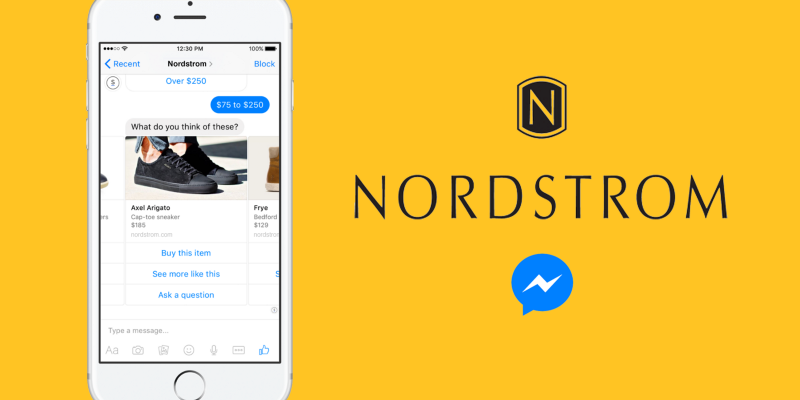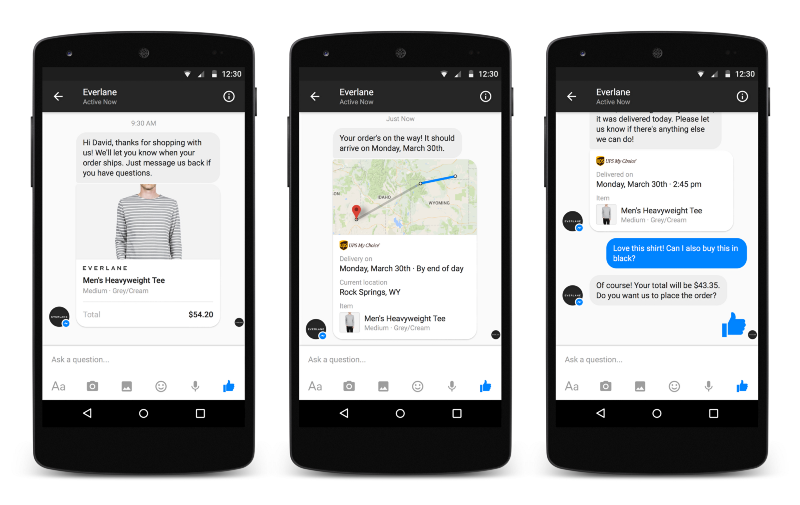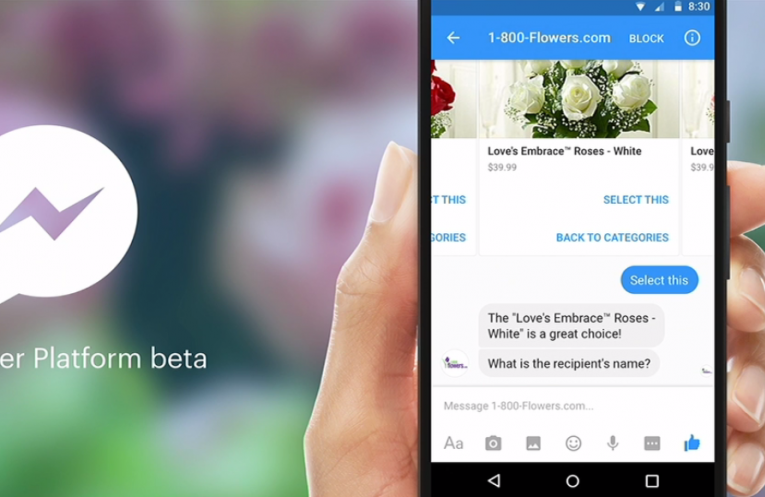ChatBot Retail
In today’s retail sphere, every brand is striving to lead the pack in e-commerce and m-commerce solutions, but the reality is that many brands are failing to provide the essence of a true 1:1 experience

In today’s retail sphere, every brand is striving to lead the pack in e-commerce and m-commerce solutions, but the reality is that many brands are failing to provide the essence of a true 1:1 experience for their consumers. This focus on commerce is complimented by a huge shift toward messaging applications as more and more consumers are jumping on these platforms versus other apps. Subsequently, this trend is shaping how digital transactions are taking place, creating a different modality for interaction between retailers and consumers.
The surge of apps like Facebook Messenger, Whatsapp and Snapchat has positioned messaging as a prime component of the e-commerce world. Messaging is no longer poised to be a place to simply discuss weekend plans and catch up on life events, but instead to be an avenue for brands to serve consumers and provide an even higher level of customer service. Simultaneously, it allows smaller brands to legitimately compete with retail giants like Amazon through more meaningful communication and personalisation. So what are the indicators of this move to e-commerce via messaging and why will it be beneficial to both brands and consumers?
The Impact of App Fatigue
Though there have never been more app experiences to discover and use, app charts are still ruled by the same big players. In 2015, every single one of the top 10 apps belonged to Google, Apple or Facebook. Rather than instigating consumers to adopt new and useful apps, this has instead inspired a very serious case of “app fatigue,” with 77 percent of all users abandoning new apps within just three days of downloading them. Additionally, a recent study by comScore revealed that users spend 80 percent of their time using only three mobile apps.
This means the odds are stacked against brands with proprietary e-commerce apps trying to pry the attention of consumers away from behemoths like Facebook and Instagram which have embedded themselves into people’s day to day lives in a way that most apps cannot.
That being said, there is still hope for smaller companies looking to find success in the competitive mobile arena. Leveraging popular messaging platforms such as Facebook Messenger and WhatsApp to serve and sell to customers is making it easier for those in the e-commerce space to reach the consumers on the platforms they use every day. What started in our browsers later expanded to include mobile apps and is now being extended into the messaging space.
Humanisation of Brands
While messaging e-commerce won’t replace the platforms that came before it, it gives consumers a voice in the conversations they have with the brands they want to interact with, talking to real humans, or very real seeming bots to receive product information and consumer service in real time. Now a shopper can message their favourite store asking about a product, receive a selection to choose from and buy one instantly.
While it may sound more complicated to shop this way compared to other e-commerce platforms, in many cases it offers a more seamless purchase process and will eventually lead people to interact more frequently with a brand. Rather than entering payment and shipping information into individual apps, users can store their details one time on the messaging platform itself and apply it to whichever brand they are doing business with at the time.
The recent launch of messaging bots by Facebook, Kik Messaging, and Whatsapp are taking this e-commerce trend by storm. Facebook is also prepping a personal assistant function called M, which will facilitate e-commerce and other services. Whether brands will choose to let bots do the talking or rely on actual humans will be a matter of preference, but it’s clear we are in the middle of a major transition.
Benefits for Both Brands and Consumers
Currently early adopter brands like Everlane, Operator, and Spring are using Facebook Messenger to provide customers with transactional information like shipping updates and to answer product questions. While smaller brands usually can’t usually compete with giants like Amazon on price or shipping speed, they can go where the customers already are and build a frictionless way to shop that brings some of the personalisation of the in-store experience to the digital space.
Moving forward, consumers will be able to come to brands for advice on purchases and receive a higher level of detail and customer service that has been lacking in the e-commerce space for some time now. Brands which may often be perceived as massive conglomerates can humanise themselves and engage more directly with their customers. By learning more about their consumers and their consumer preferences through mobile messaging commerce, the best brands can deliver a higher quality experience wherever their customers may be.
 English
English








